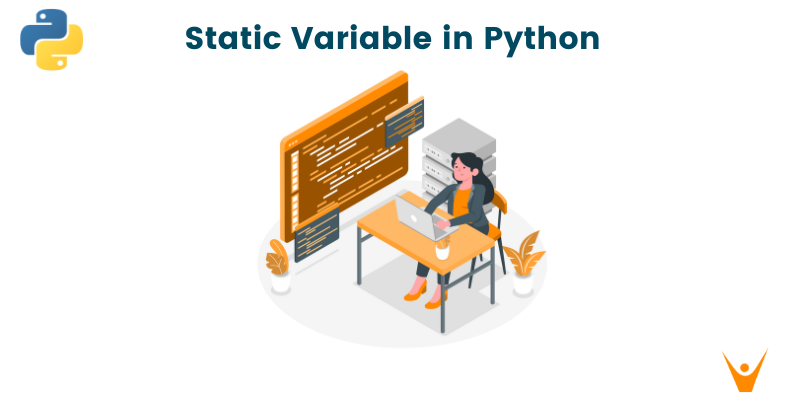Python Static Variables and Methods: Class Level Members
Learn how to define and use class variables and methods in Python, enabling efficient data sharing and functionality at the class level.
Learn how to define and use class variables and methods in Python, enabling efficient data sharing and functionality at the class level.
In object-oriented programming, understanding how data and behavior are shared and accessed within a class is fundamental. Python provides mechanisms to define variables and methods that operate at the class level rather than the instance level. This exploration delves into the concepts of static variables and methods in Python, illustrating their definition, usage, and significance in structuring your code effectively. We'll uncover how these constructs contribute to code organization, reusability, and maintainability.
Let's break down static variables and methods in Python.
Understanding the Basics
How to Define Them
class MyClass:
class_variable = "This is a class variable"
def __init__(self, instance_var):
self.instance_var = instance_var
@staticmethod
def static_method():
print("This is a static method")class_variable is defined outside any method, making it a class variable.__init__ defines an instance variable (self.instance_var).@staticmethod decorates static_method, making it a static method.Key Points
MyClass.class_variable) or an instance (object.class_variable).Python's Flexibility
While Python provides ways to define class and static methods, it's important to remember that it's a dynamically typed language. This means you have flexibility in how you structure your code.
In Essence
Static variables and methods in Python provide a way to organize code related to a class but not specific to any instance. They promote code reusability and can make your code cleaner and more maintainable.
This Python code defines a class called MyClass with a class variable, an instance variable, and a static method. It demonstrates how to create instances of the class, access and modify the class variable, and call the static method. The example highlights the difference between class variables and instance variables, showing that modifying a class variable through an instance creates a new instance variable without affecting the original class variable.
class MyClass:
class_variable = "This is a class variable"
def __init__(self, instance_var):
self.instance_var = instance_var
@staticmethod
def static_method():
print("This is a static method")
# Create instances of the class
object1 = MyClass("Instance variable 1")
object2 = MyClass("Instance variable 2")
# Accessing class variable
print(MyClass.class_variable) # Accessing through class name
print(object1.class_variable) # Accessing through instance
# Modifying class variable through an instance
object2.class_variable = "Modified class variable"
print(object2.class_variable) # Modified for object2
print(MyClass.class_variable) # Original value remains for the class
# Calling static method
MyClass.static_method() # Accessing through class name
object1.static_method() # Accessing through instanceExplanation:
Class Definition: We define a class MyClass with a class variable class_variable, an instance variable instance_var initialized in the constructor, and a static method static_method.
Instance Creation: We create two instances (object1 and object2) of MyClass.
Accessing Class Variable: We demonstrate accessing the class_variable using both the class name (MyClass.class_variable) and an instance (object1.class_variable).
Modifying Class Variable: We attempt to modify the class_variable through object2. This creates a new instance variable for object2 without affecting the original class_variable.
Calling Static Method: We call the static_method using both the class name (MyClass.static_method()) and an instance (object1.static_method()), showing that it's not bound to a specific object.
This code example illustrates the concepts of static variables and methods in Python, highlighting their usage and potential pitfalls.
Similarities and Differences:
cls), allowing them to interact with class-level attributes and methods.When to Use Static Methods:
Alternatives and Considerations:
Best Practices:
Beyond the Basics:
| Feature | Description | Access | Notes |
|---|---|---|---|
| Class Variable | Shared by all instances of a class. |
ClassName.variable or object.variable
|
Modifying through an instance creates a new instance variable, leaving the original unchanged for other instances. |
| Instance Variable | Belongs to a specific object. | self.variable |
Defined inside methods (often __init__). |
| Static Method | Belongs to the class, not an object. | ClassName.method() |
Cannot access instance variables or methods. Useful for utility functions independent of object state. |
Key Takeaways:
Static variables and methods in Python provide a way to organize code related to a class but not specific to any instance. They promote code reusability and can make your code cleaner and more maintainable. Understanding how data and behavior are shared and accessed within a class is fundamental in object-oriented programming. Python's mechanisms for defining class-level variables and methods contribute to code organization, reusability, and maintainability. While Python offers flexibility, it's essential to use these concepts judiciously and document their purpose and usage for clarity. By grasping these principles, developers can leverage static variables and methods effectively to write more structured and maintainable object-oriented code in Python.
 Class or Static Variables in Python - GeeksforGeeks | A Computer Science portal for geeks. It contains well written, well thought and well explained computer science and programming articles, quizzes and practice/competitive programming/company interview Questions.
Class or Static Variables in Python - GeeksforGeeks | A Computer Science portal for geeks. It contains well written, well thought and well explained computer science and programming articles, quizzes and practice/competitive programming/company interview Questions. Static variables and methods in Python | Bringing a bit of C++ into Python.
Static variables and methods in Python | Bringing a bit of C++ into Python. What is a Static Variable in Python? - Scaler Topics | Learn about static variables in Python along with syntax, examples, and code explanations on Scaler Topics.
What is a Static Variable in Python? - Scaler Topics | Learn about static variables in Python along with syntax, examples, and code explanations on Scaler Topics. Static Variable in Python (How to Create and Access it?) | Find out everything about static variables in python. Learn how to create and access a static variable in python.
Static Variable in Python (How to Create and Access it?) | Find out everything about static variables in python. Learn how to create and access a static variable in python.